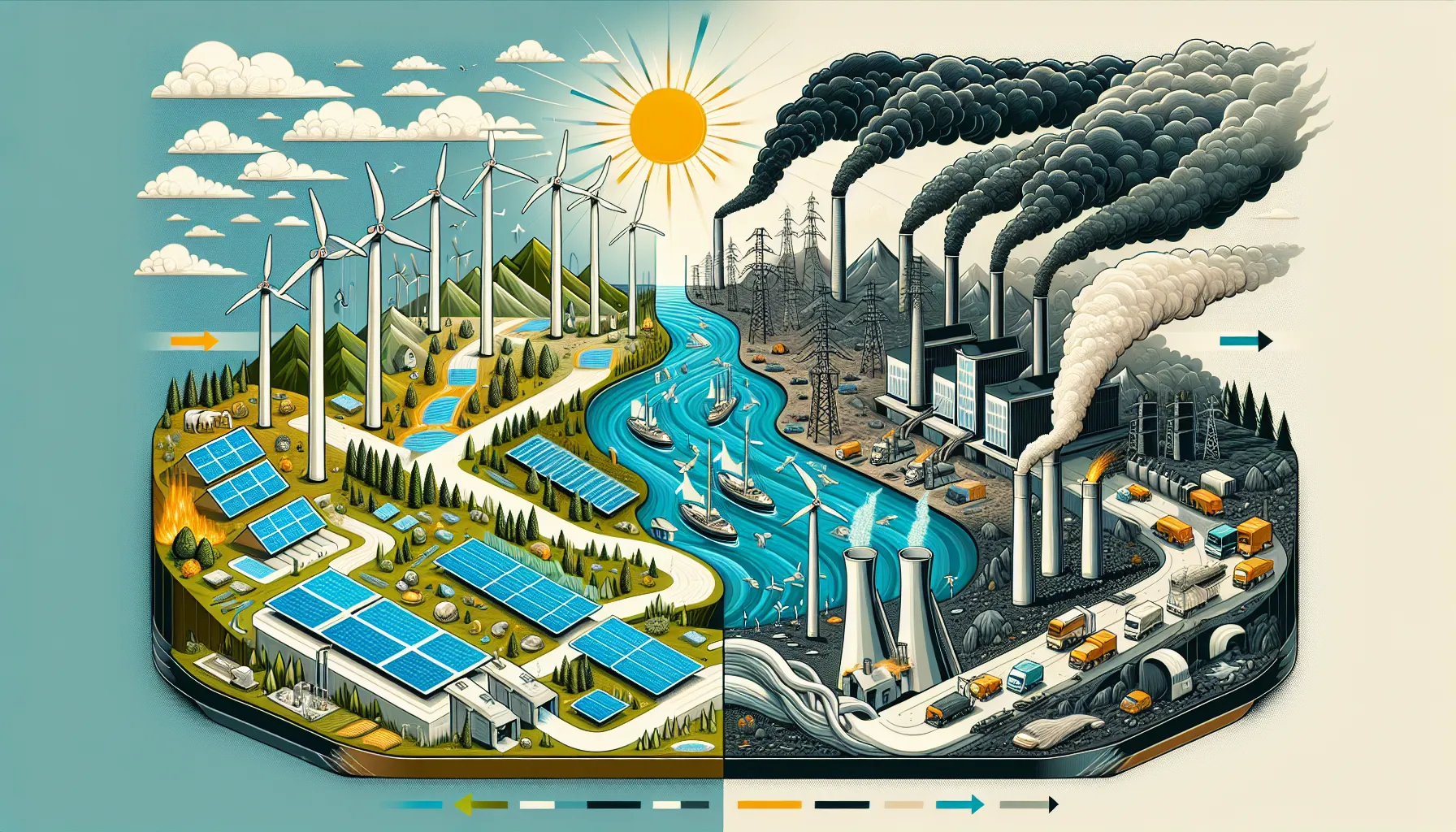Are you preparing for the IELTS Reading test and looking to improve your skills? Today, we’ll explore an engaging topic that combines technology and philanthropy: “How blockchain is improving transparency in the charity sector.” This practice test will help you enhance your reading comprehension while learning about an innovative application of blockchain technology.
Introduction to the IELTS Reading Test
The IELTS Reading test consists of three passages of increasing difficulty, followed by a series of questions designed to assess your comprehension and analytical skills. In this practice test, we’ll simulate the actual exam format, providing you with three passages on the topic of blockchain technology in the charity sector, along with a variety of question types.
Passage 1 (Easy Text): The Basics of Blockchain in Charity
Blockchain technology, originally developed for cryptocurrencies like Bitcoin, is now finding applications in various sectors, including charitable organizations. This distributed ledger technology offers a new level of transparency and accountability that was previously difficult to achieve in the nonprofit world.
Charities often face challenges in demonstrating how donations are used and proving their impact. Blockchain provides a solution by creating an immutable record of transactions that can be viewed by anyone. This means that every donation and its subsequent use can be tracked from start to finish, providing donors with unprecedented visibility into how their contributions are making a difference.
![]() Blockchain visualizing donation tracking for charities, ensuring transparency and accountability in the non-profit sector.
Blockchain visualizing donation tracking for charities, ensuring transparency and accountability in the non-profit sector.
One of the key advantages of blockchain in the charity sector is its ability to reduce administrative costs. By automating many processes and eliminating the need for intermediaries, blockchain can help organizations direct more funds towards their actual charitable work rather than operational expenses.
Moreover, blockchain can help combat fraud in the charity sector. The technology’s inherent security features make it extremely difficult for bad actors to manipulate records or divert funds. This increased security can help restore trust in charitable organizations, potentially leading to increased donations and support.
Questions 1-5
Do the following statements agree with the information given in the passage? Write
TRUE if the statement agrees with the information
FALSE if the statement contradicts the information
NOT GIVEN if there is no information on this
- Blockchain technology was initially created for use in the charity sector.
- Blockchain provides a transparent record of transactions.
- The use of blockchain can help charities reduce their administrative costs.
- All charities are currently using blockchain technology.
- Blockchain technology can help prevent fraudulent activities in the charity sector.
Questions 6-8
Complete the sentences below. Choose NO MORE THAN TWO WORDS from the passage for each answer.
- Blockchain technology creates an __ __ of all transactions.
- The use of blockchain can help charities direct more funds towards their __ __ work.
- The __ __ of blockchain make it difficult for people to manipulate records.
Passage 2 (Medium Text): Implementing Blockchain in Charitable Organizations
The integration of blockchain technology into charitable organizations is not without its challenges, but the potential benefits are significant. One of the primary advantages is the enhancement of donor confidence. With blockchain, donors can track their contributions in real-time, seeing exactly how and where their money is being used. This level of transparency can encourage more people to donate, knowing that their funds are being used effectively and as intended.
Another crucial aspect of blockchain implementation in charities is the creation of smart contracts. These are self-executing contracts with the terms of the agreement directly written into code. In the context of charitable giving, smart contracts can automate the distribution of funds based on predefined conditions. For example, a smart contract could be set up to release funds to a disaster relief organization only when a certain number of verified reports of the disaster are received, ensuring that aid is delivered promptly and appropriately.
Blockchain also offers the potential for improved collaboration between charitable organizations. By creating a shared, transparent ledger of activities and resources, charities working in similar fields or regions can coordinate their efforts more effectively, reducing duplication and maximizing impact. This could lead to more efficient use of resources and better outcomes for beneficiaries.
However, the adoption of blockchain technology in the charity sector is not without its challenges. One significant hurdle is the technological barrier. Many charitable organizations, especially smaller ones, may lack the technical expertise or resources to implement and maintain blockchain systems. Additionally, there are concerns about the energy consumption associated with some blockchain networks, which could conflict with the environmental goals of many charities.
Despite these challenges, the potential of blockchain to revolutionize the charity sector is clear. As the technology matures and becomes more accessible, we can expect to see more charitable organizations embracing blockchain to enhance their transparency, efficiency, and impact.
Questions 9-13
Choose the correct letter, A, B, C, or D.
-
According to the passage, what is one of the main advantages of using blockchain in charities?
A) It increases the number of donors
B) It improves donor confidence
C) It reduces the need for donations
D) It simplifies the donation process -
What are smart contracts in the context of charitable giving?
A) Contracts that require smart technology to execute
B) Agreements that are only made with intelligent donors
C) Self-executing contracts with predefined conditions
D) Contracts that automatically increase donation amounts -
How can blockchain improve collaboration between charities?
A) By creating competition between organizations
B) By allowing charities to share donor information
C) By creating a shared, transparent ledger of activities
D) By forcing charities to merge their operations -
What is mentioned as a challenge for charities adopting blockchain technology?
A) Lack of donor interest
B) Technological barriers
C) Government regulations
D) Increased operational costs -
What does the passage suggest about the future of blockchain in the charity sector?
A) It will completely replace traditional donation methods
B) It will only be adopted by large, international charities
C) It will likely become more widely adopted as the technology matures
D) It will be abandoned due to its environmental impact
Questions 14-18
Complete the summary below. Choose NO MORE THAN TWO WORDS from the passage for each answer.
Blockchain technology offers several benefits to the charity sector, including enhanced (14) __ __ and the ability to create (15) __ __ for automated fund distribution. It also has the potential to improve (16) __ between organizations. However, charities face challenges in adopting blockchain, such as the (17) __ __ and concerns about (18) __ __ of some blockchain networks.
Passage 3 (Hard Text): The Future of Blockchain in Philanthropy
As blockchain technology continues to evolve, its potential to transform the philanthropic landscape becomes increasingly apparent. The decentralized nature of blockchain offers a paradigm shift in how charitable organizations operate, interact with donors, and deliver aid to beneficiaries. This technological revolution is not merely about improving existing processes; it’s about reimagining the entire ecosystem of giving and impact.
One of the most promising developments in this field is the concept of tokenization in charitable giving. By creating digital tokens that represent specific projects or causes, charities can offer donors a more direct and engaging way to contribute. These tokens can be programmed with specific conditions, ensuring that funds are only released when predetermined milestones are met. This approach not only enhances transparency but also allows for a more dynamic and responsive form of philanthropy.
The integration of blockchain with other emerging technologies, such as artificial intelligence and Internet of Things (IoT) devices, opens up new possibilities for measuring and verifying impact. For instance, IoT sensors could be used to monitor environmental conditions in areas receiving aid, with this data being recorded on the blockchain and triggering smart contracts to release additional funds or resources as needed. This convergence of technologies could lead to more data-driven and effective charitable interventions.
Blockchain also has the potential to democratize philanthropy by enabling micro-donations and peer-to-peer giving on a global scale. By reducing transaction costs and eliminating intermediaries, blockchain platforms can make it feasible for individuals to make small, frequent donations to causes they care about, regardless of geographical boundaries. This could lead to a more diverse and engaged donor base, potentially shifting the power dynamics in the philanthropic world.
However, the widespread adoption of blockchain in philanthropy is not without its challenges. Regulatory uncertainty remains a significant hurdle, as the legal framework surrounding blockchain and cryptocurrencies continues to evolve. There are also concerns about the digital divide, as the technology-dependent nature of blockchain could potentially exclude certain populations from participating in or benefiting from these new philanthropic models.
Moreover, the issue of scalability continues to be a topic of debate in the blockchain community. As charitable organizations handle increasing volumes of transactions and data, the ability of blockchain networks to process this information efficiently becomes crucial. Various solutions, such as layer-2 protocols and sharding, are being developed to address these scalability concerns, but their effectiveness in the context of charitable operations remains to be fully tested.
Despite these challenges, the potential of blockchain to create a more transparent, efficient, and impactful philanthropic sector is undeniable. As the technology matures and these hurdles are addressed, we can expect to see a gradual but significant shift in how charities operate and how individuals engage in giving. The future of philanthropy, powered by blockchain, promises to be more transparent, participatory, and effective in addressing global challenges.
Questions 19-23
Choose the correct letter, A, B, C, or D.
-
What does the passage suggest about the impact of blockchain on philanthropy?
A) It will only improve existing processes
B) It will completely replace traditional charitable organizations
C) It offers a fundamental change in how charity operates
D) It will have minimal impact on how people donate -
What is tokenization in the context of charitable giving?
A) A way to encrypt donor information
B) A method of creating digital representations of projects or causes
C) A process of converting donations into cryptocurrency
D) A system for rewarding frequent donors -
How could the integration of blockchain with IoT devices benefit charities?
A) By reducing the need for human volunteers
B) By automating all aspects of charitable work
C) By enabling more data-driven and responsive aid delivery
D) By replacing traditional forms of donation -
What potential effect of blockchain on philanthropy is mentioned in the passage?
A) It could make large donations more common
B) It might centralize control of charitable organizations
C) It could democratize philanthropy through micro-donations
D) It will eliminate the need for individual donors -
What is mentioned as a challenge for the adoption of blockchain in philanthropy?
A) Lack of interest from charitable organizations
B) Regulatory uncertainty
C) Resistance from traditional donors
D) High implementation costs
Questions 24-27
Complete the summary below. Choose NO MORE THAN THREE WORDS from the passage for each answer.
Blockchain technology has the potential to transform philanthropy by offering increased transparency and efficiency. The concept of (24) __ allows for more direct donor engagement, while integration with (25) __ and IoT devices could lead to more effective aid delivery. Blockchain could also enable (26) __ on a global scale, potentially changing the dynamics of charitable giving. However, challenges such as (27) __ and concerns about the digital divide need to be addressed for widespread adoption.
Answer Key
Passage 1
- FALSE
- TRUE
- TRUE
- NOT GIVEN
- TRUE
- immutable record
- actual charitable
- inherent security
Passage 2
- B
- C
- C
- B
- C
- donor confidence
- smart contracts
- collaboration
- technological barrier
- energy consumption
Passage 3
- C
- B
- C
- C
- B
- tokenization
- artificial intelligence
- micro-donations
- regulatory uncertainty
This IELTS Reading practice test has provided you with valuable insights into how blockchain technology is improving transparency in the charity sector. By engaging with this complex topic, you’ve not only enhanced your reading comprehension skills but also gained knowledge about an innovative application of technology in philanthropy.
Remember, success in the IELTS Reading test comes with practice and familiarity with various question types. Keep honing your skills by regularly practicing with diverse texts and question formats. If you’re looking to further improve your IELTS preparation, you might find our articles on AI and blockchain integration and how blockchain improves the accountability of charitable organizations helpful for expanding your vocabulary and understanding of technology-related topics.
Good luck with your IELTS preparation!


